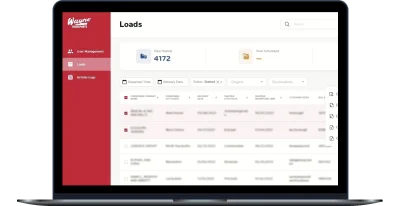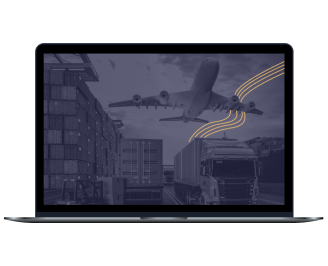Logistics customer portal for Wayne Transports
Discover how we helped a trucking company build trust with their existing customers, simplify order management for employees, and decrease operational expenses by developing an interactive web-based customer portal that supports real-time round-the-clock order processing and tracking.
-
industry
Logistics
-
Country
USA
-
Team size
7+
-
Implementation
4 months
About the client
Wayne Transports is one of the largest family-owned trucking companies in the US, offering B2B transportation services across the US and Canada.

Business context
Wayne Transports needed a reliable logistics portal for their customers, suppliers, and employees to automate manual order processing, develop efficient tools for creating and managing orders and interacting with customers as well as implement a unified source of truth to get customer and shipment data in a single system. The company approached Yalantis because of our relevant experience in supply chain software and customer portal development. Together, we outlined the following project goals:
- Develop an easy-to-understand and intuitive UI/UX
- Implement relevant and personalized functionality based on user roles
- Ensure a proper level of security with a permissions system
Solution overview
-
We needed to ensure that the customer portal would be a single point of entry for Wayne Transports’ customers and suppliers, where they could overview and manage freight orders as well as download relevant transportation documents. The portal also had to be tailored to sales representatives, transportation managers, and billing department representatives.
Yalantis’ project management strategy to meet the client’s requirements
To deliver the product on time and on budget, we went through the following stages:
- Discovery. We identified Wayne Transports’ target audience, analyzed key competitors, and delineated business objectives to develop an accurate project management plan.
- Development. We developed, delivered, and demonstrated a software solution to the client following an iterative approach.
- Stabilization. This stage included regression testing to check the customer portal in full, detecting and fixing remaining issues.
- User acceptance testing. Wayne Transports’ end users validated the customer portal and provided feedback. Based on it, we made necessary adjustments.
- Go-live. The client signed off and we released the final product to the production environment.
-
Ensuring a streamlined UI/UX design
From the login screen to logout, we emphasized clear navigation with a minimalist layout and a standout menu bar. Our design team also ensured the platform’s responsiveness so that pages and all customer portal components were aligned and automatically resized for different screen resolutions.
-
Achieving software efficiency with relevant functionality
To provide Wayne Transports with a convenient and easy-to-use customer portal, we integrated the following features:
- Role-based restrictions. Individual users can view and manage only the data available to them, such as transportation documents and invoices for their orders only. The customer portal includes five user roles:
- Admin
- Billing
- Sales
- Customer
- Supplier
- User management. System admins can:
- keep track of users’ contact information
- control users’ level of access to platform resources
- directly communicate with users
- monitor and log users’ activities around the platform
- Load management dashboard. This dashboard provides an overview of freight orders, including:
- status
- customer’s company name
- departure time and delivery time
- attached documents
- Notifications and alerts. The platform allows for sending notifications to all users and groups of users to share any critical information.
- Integration with the company’s logistics systems. It’s possible to exchange data between the customer portal and the company’s logistics systems to enable a seamless workflow.
-
Implementing security best practices
We used Microsoft Azure to implement the following security controls:
- Encryption to ensure a high level of data security
- Daily data backups for unhindered recovery in case of incidents
- A stable and reliable incident response process
- App snapshotting to provide reliable web application backups
- Two-factor authentication and role-based access control to prevent unauthorized access
- Additional access protection with a web application firewall
- Security headers to ensure platform security in the browser
- Efficient monitoring of software vulnerabilities
Value delivered
Our productive four-month cooperation with Wayne Transports resulted in:
-
increased sales owing to transparent order delivery and improved customer satisfaction
-
convenient and secure order tracking in a unified web-based interface
-
full coverage of customer and employee needs in a single solution
-
optimized operating costs by reducing employees’ manual tasks
-
fewer errors in order management and communication with customers
Develop a value-added logistics customer portal
Enrich your customer experience and eliminate manual order processing by implementing a tailored customer portal.
More projects
-

System for big data analytics in the supply chain
A solution for a 3PL company to ensure unified access to business data and in-depth data analytics
-

Data lake for a manufacturing company
A data repository system for processing and storing massive amounts of production data
-

SaaS solution for transportation management
A custom transportation management system to increase supply chain visibility and ensure effective logistics problem-solving